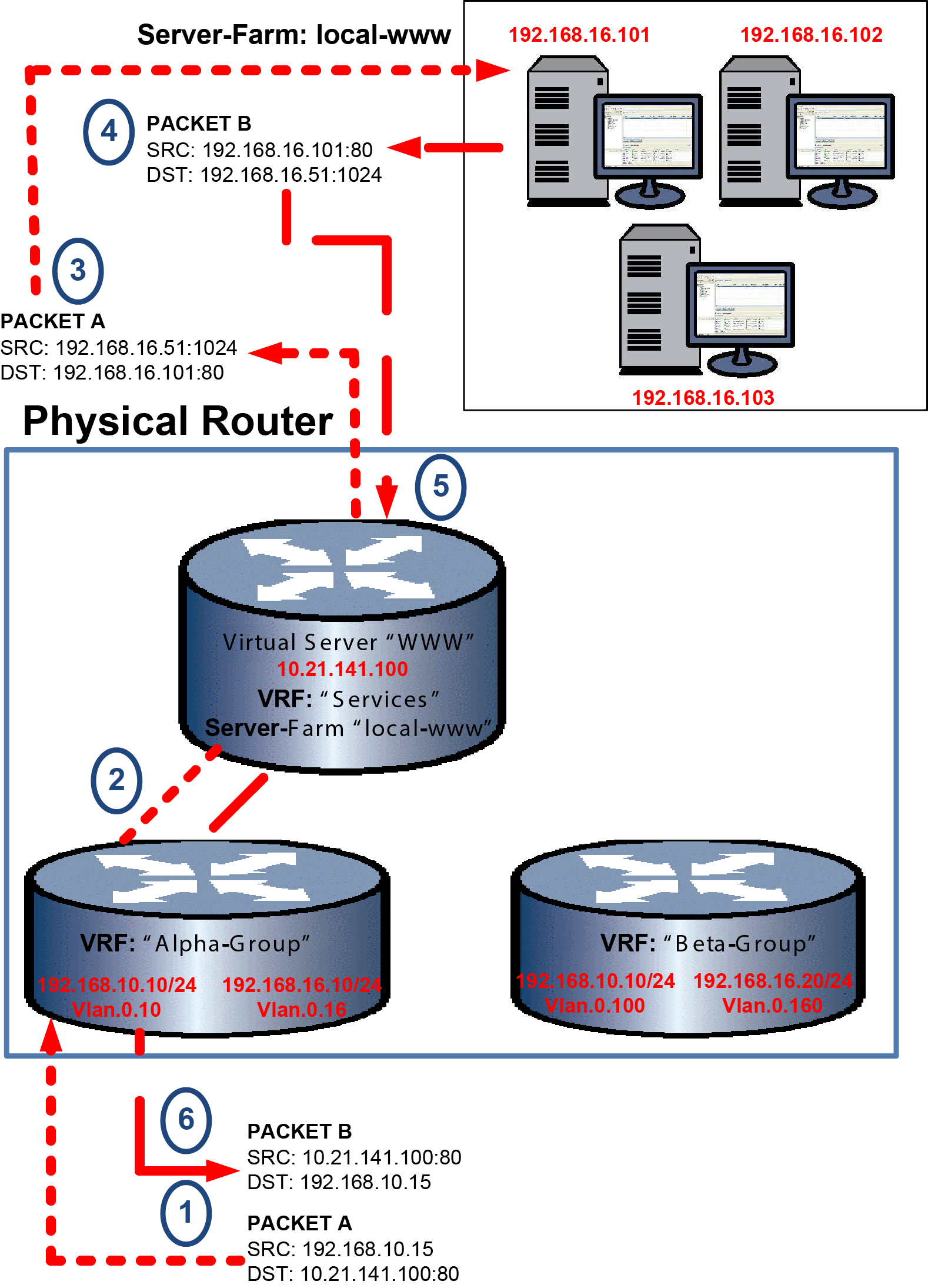SLB is the process by which a service is provided by a proxy device for a set of real servers (the actual server devices) that implement the service. The proxy device load balances the service by distributing the service between itself and the real servers. LSNAT provides SLB services on the S-Series platform. An SLB configuration consists of a virtual server, acting as the proxy device, and a server-farm made up of one or more real servers.
The virtual server configuration specifies:
The server-farm configuration specifies:
The virtual server selects a real server to handle a client request for a service.
SLB services can be configured on a single VRF and shared with multiple non-SLB configured VRFs, by specifying the all-vrfs parameter when configuring the virtual server.
Sharing SLB Services With Multiple VRFs presents an example of an SLB all-VRFs configuration. The packet processing and flow for this example is as follows:
System(su)->router Services System(su-Services)->configure System(su-Services-config)->ip nat pool local-net 192.168.16.51 192.168.16.55 System(su-Services-config)->ip slb serverfarm local-www System(su-Services-config-slb-sfarm)->real 192.168.16.101 System(su-Services-config-slb-real)->inservice System(su-Services-config-slb-real)->exit System(su-Services-config-slb-sfarm)->real 192.168.16.102 System(su-Services-config-slb-real)->inservice System(su-Services-config-slb-real)->exit System(su-Services-config-slb-sfarm)->real 192.168.16.103 System(su-Services-config-slb-real)->inservice System(su-Services-config-slb-real)->exit System(su-Services-config-slb-sfarm)->exit System(su-Services-config)->ip slb vserver WWW System(su-Services-config-slb-vserver)->virtual 10.21.141.100 tcp www all-vrfs System(su-Services-config-slb-vserver)->serverfarm local-www System(su-Services-config-slb-vserver)->source nat pool local-net System(su-Services-config-slb-vserver)->inservice System(su-Services-config-slb-vserver)->exit System(su-Services-config)->


 Print
this page
Print
this page Email this topic
Email this topic Feedback
Feedback